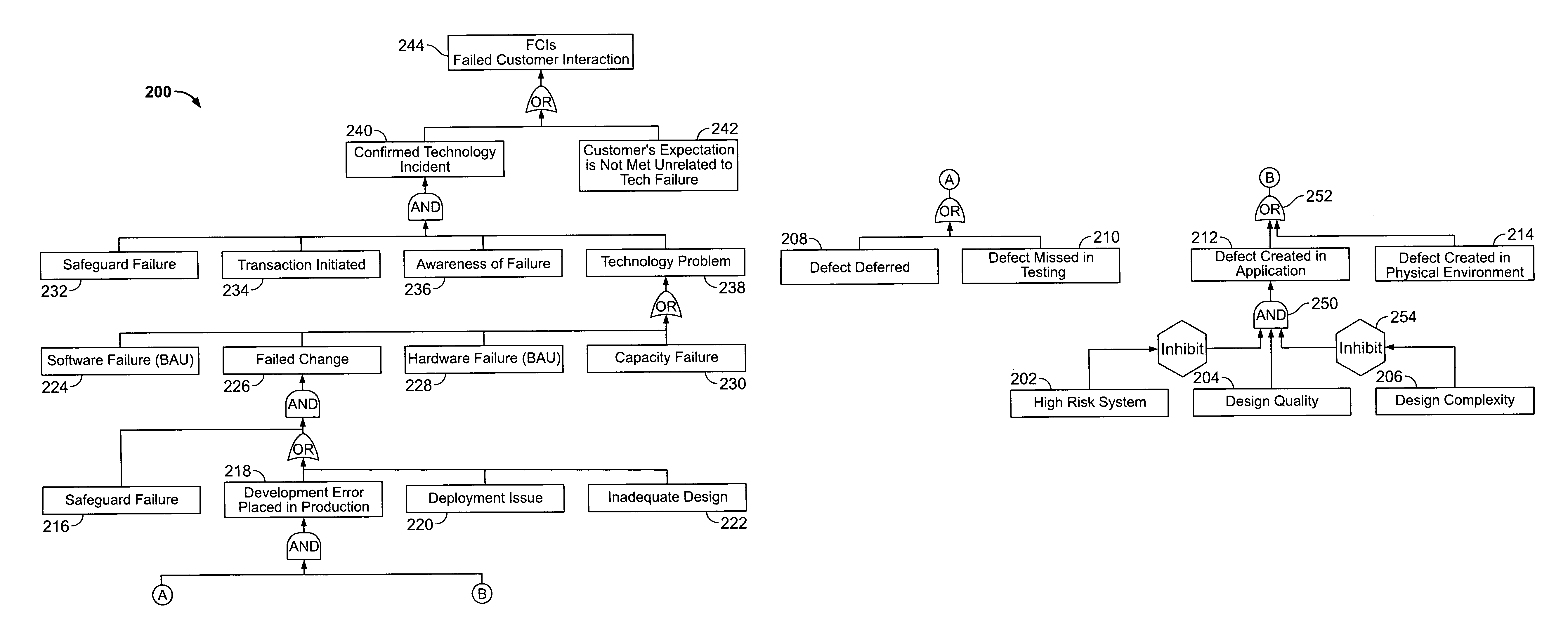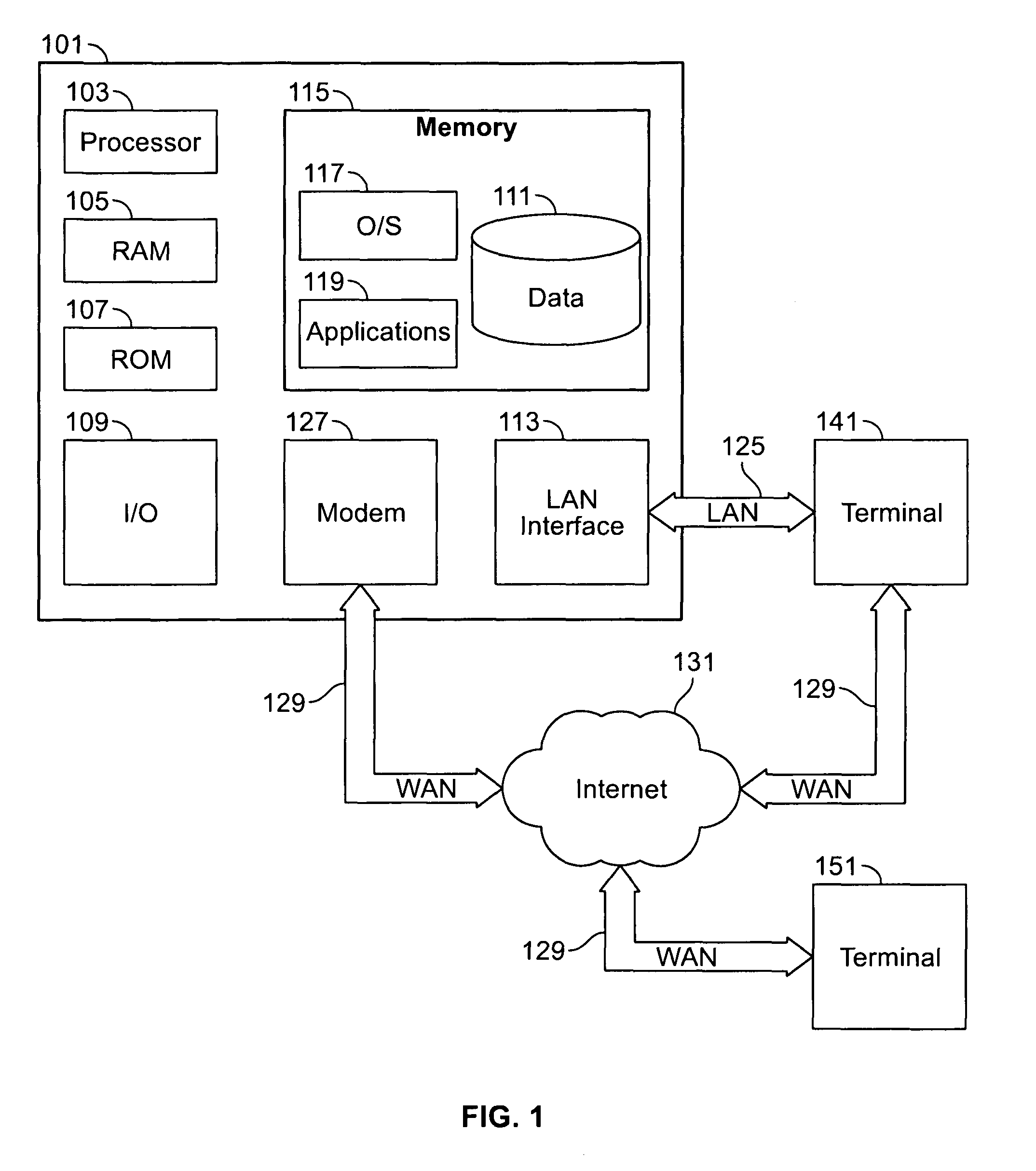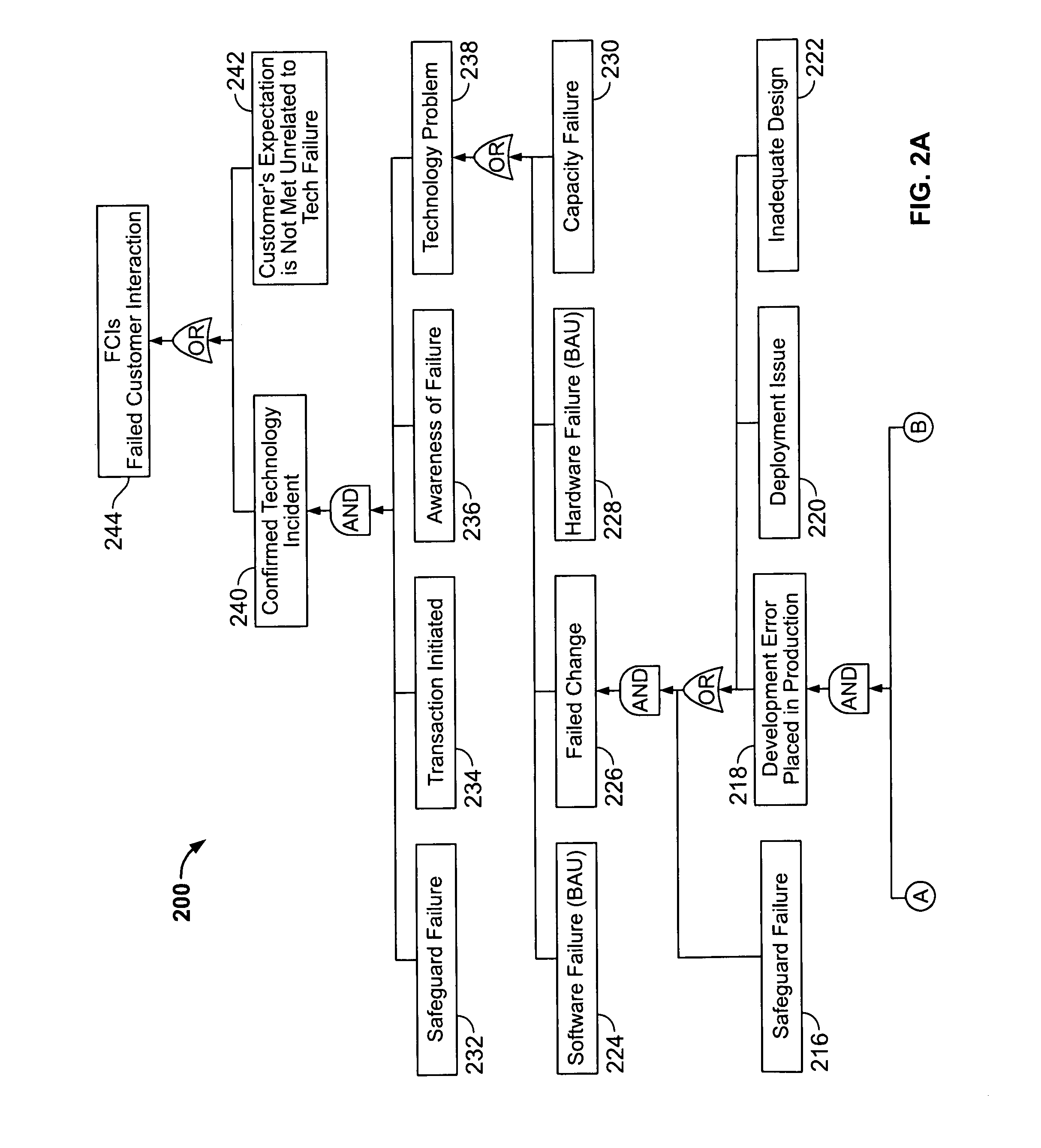Customer impact predictive model and combinatorial analysis
a predictive model and predictive model technology, applied in the field of customer impact predictive model and combinatorial analysis, can solve the problems of high design complexity, late submission of requirements documents, and business or other entities engaged in software product deploymen
- Summary
- Abstract
- Description
- Claims
- Application Information
AI Technical Summary
Benefits of technology
Problems solved by technology
Method used
Image
Examples
Embodiment Construction
[0045]Methods and systems for objective DF risk assessments are provided.
[0046]Methods and systems for the analysis of fault trees using a novel system of valuation and evaluation are also provided.
[0047]As a first step, the methods and systems may proceed by creating an FTAM. The FTAM may model the causal relationships between Root Causes, Minor Effects, and Primary Effects.
[0048]The FTAM may include relationship algorithms reflecting the relationships between one or more Root Causes, one or more Minor Effects, and the Primary Effect. Where the FTAM demonstrates or reflects a relationship between any two events, those events can be said to be related to each other.
[0049]Root causes may be assigned probability values and the relationship algorithms are then evaluated to further assign probability values to the Minor Effects and Primary Effects included in the FTAM.
[0050]Where information about the probability value for one or more Root Causes is unavailable or incomplete, any given ...
PUM
 Login to View More
Login to View More Abstract
Description
Claims
Application Information
 Login to View More
Login to View More - R&D
- Intellectual Property
- Life Sciences
- Materials
- Tech Scout
- Unparalleled Data Quality
- Higher Quality Content
- 60% Fewer Hallucinations
Browse by: Latest US Patents, China's latest patents, Technical Efficacy Thesaurus, Application Domain, Technology Topic, Popular Technical Reports.
© 2025 PatSnap. All rights reserved.Legal|Privacy policy|Modern Slavery Act Transparency Statement|Sitemap|About US| Contact US: help@patsnap.com



